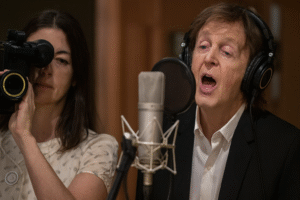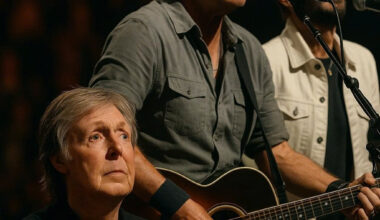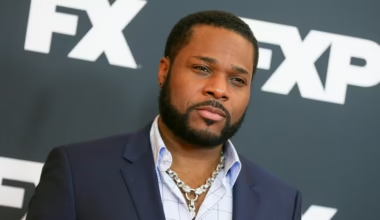In a deeply personal cinematic portrait, Mary McCartney pulls back the curtain on her father’s life, offering a rare and unfiltered glimpse into the man behind one of music’s most iconic legacies. Through a masterful blend of rare archival footage and intimate present-day moments, viewers are invited into Paul McCartney’s world — from playful bursts of laughter in the kitchen to hushed, soulful moments of him alone in the recording studio.

Sources close to the production say Mary captured scenes that even lifelong fans never imagined they’d witness: Paul softly humming an unfinished melody, recalling the first time he played it for John Lennon; casual banter with grandchildren between takes; a spontaneous singalong over an old family piano. These moments, at once ordinary and extraordinary, stitch together a tapestry of love, music, and history that feels both epic and disarmingly human.

Early screenings have reportedly left audiences in tears and awe, with some describing the film as “a love letter not only to Paul, but to the magic of music itself.” Social media has already been set alight by leaked clips — tiny windows into a life most thought they already knew — sparking waves of nostalgia and excitement across generations of fans.
Insiders whisper about particularly moving family exchanges that Mary chose to keep in their rawest form, resisting the temptation to polish away the emotion. “She wanted the truth,” one source says. “The joy, the laughter, the pauses, even the silences — because those tell a story too.”

Critics are hailing the documentary as a triumph of music, memory, and personal storytelling — a piece that doesn’t just chronicle Paul McCartney’s career, but invites viewers to sit beside him, to feel the notes resonate not from a stage, but from a living room chair.
By the end, audiences are left with more than just a deeper appreciation of a music legend — they leave with the sense that they’ve met the man himself, in all his warmth, humor, and quiet brilliance.





